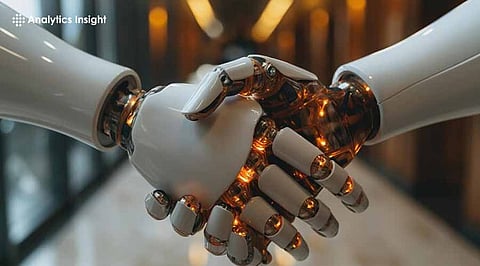

Next Generation of Robotics: Few industries have the potential to be disrupted so dramatically by advances in next generation of robotics than the world of logistics. The following three to five years will witness major transformations through the robotics collaboration, and the advent of humanoids as well as a rising need for smart automation solutions on those principles.
With a vast experience in the field of Robotics, Aurotek, a major player in the automation industry has recorded a widespread shift from automation of single station to entire production lines. The firm representing these workers says this is part of a larger trend towards ‘cobots,’ more collaborative robots that work alongside people to effectively carry out logistics. Elements like increasing labor expenses and the falling prices of robotics are driving this trend, with China taking the lead in both sales and application.
The biggest reason for the growth of next generation of robotics is that it is significantly less expensive to use robotics technology than it is to employ humans. Newer data revealed that paying employees for their time is up to six times more expensive than employing robots which in the near future is expected to grow. The economic incentive in this is inspiring industries everywhere to investigate automation options to increase productivity and remain relevant in global competitive markets.
Besides financial factors, the need for automation is spreading to areas beyond the usual manufacturing environments. Self-driving Mobile Robots (AMRs) have already become the leading force in managing factory logistics, yet there's an increasing requirement for automation in different fields. Aurotek's investigation into Level 4-level unmanned transport vehicles in Southeast Asia shows this changing need, as businesses look for creative methods to improve efficiency and boost output.
However, at one time it was believed that building such robots would happen in 5 to 10 years. But as the recent developments suggest, it can be accomplished within the next 3 to 5 years. The implications for this discovery would be widespread, for home and office environments — The emergence of a smart device that is adept at as many tasks as humans.
Forecasters anticipate that upcoming service robots will lean more towards smartness, with roughly 80% of their features powered by sophisticated algorithms and mental skills, and the other 20% will be dedicated to physical movement for interactions. On the other hand, industrial robots are projected to keep a different balance, focusing more on physical skills than mental tasks. This move towards smart automation marks a major advancement in tech progress, offering to boost output and effectiveness in various sectors.
The combination of human-like robots and smart automation technologies marks the beginning of a fresh chapter filled with potential, providing businesses with unparalleled chances to improve operations, cut expenses, and discover new paths for expansion. Across various industries, from production and distribution to medical care and leisure, the influence of next generation of robotics will be evident in many areas, changing how activities are carried out and altering the connection between people and technology.
Further, overlapping of robotics with the other upcoming technologies like AI, IoT, etc., will further strengthen the capabilities of the smart automation systems. In addition, this will also help them adapt to various environments, perform complex tasks with accuracy and precision.
In conclusion, the next generation of robotics may be on the brink of a major transition due to the advancements in human-robot collaboration, the imminent surge of humanoid robots, as well as the development smart automation systems. Gradually, these impacts will ripple through sectors, redefine job types and create the landscape for a world where human activity is complemented by robotic facts to help achieve common goals.
Join our WhatsApp Channel to get the latest news, exclusives and videos on WhatsApp
_____________
Disclaimer: Analytics Insight does not provide financial advice or guidance on cryptocurrencies and stocks. Also note that the cryptocurrencies mentioned/listed on the website could potentially be scams, i.e. designed to induce you to invest financial resources that may be lost forever and not be recoverable once investments are made. This article is provided for informational purposes and does not constitute investment advice. You are responsible for conducting your own research (DYOR) before making any investments. Read more about the financial risks involved here.
